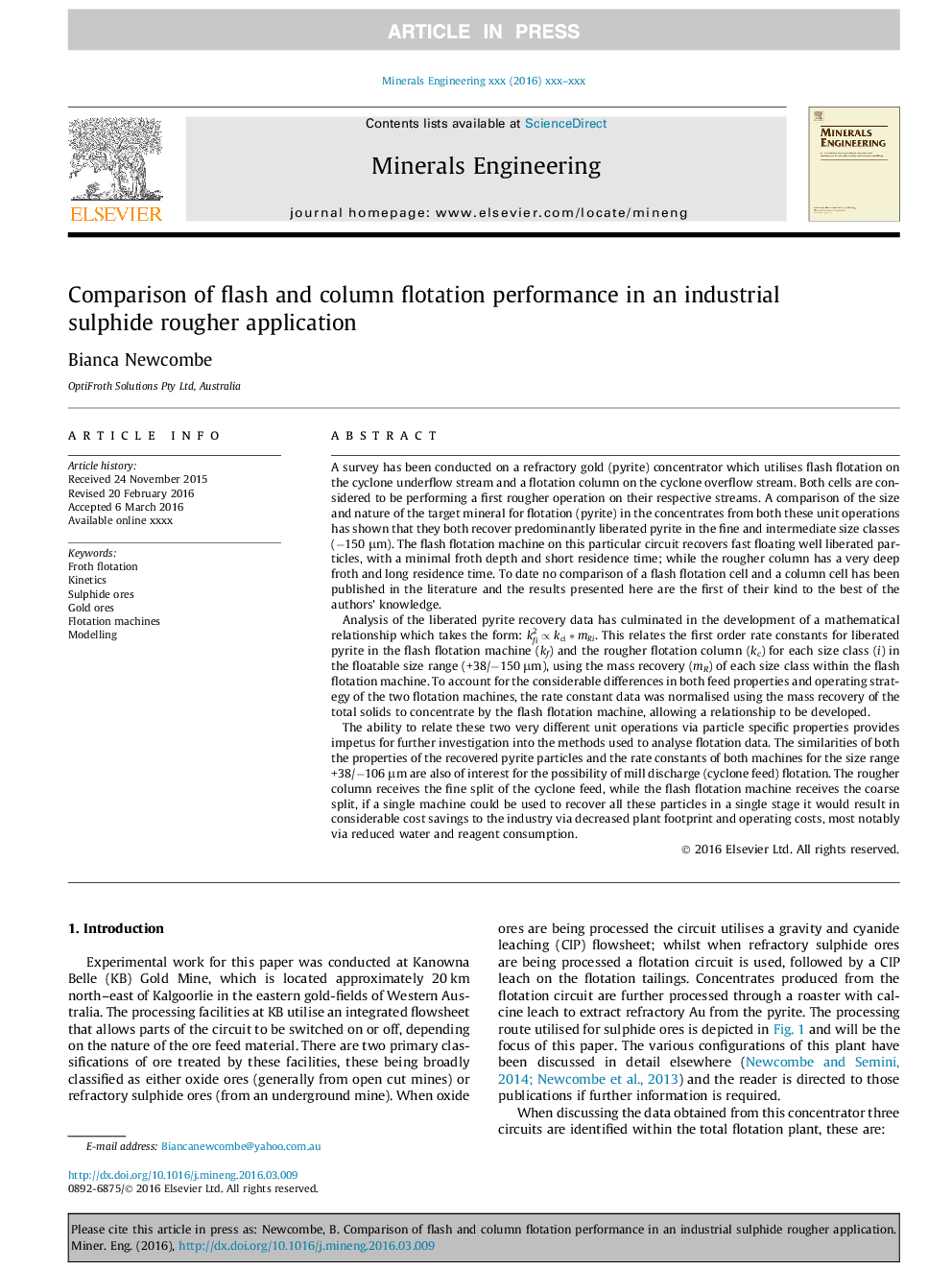| Article ID | Journal | Published Year | Pages | File Type |
|---|---|---|---|---|
| 4910347 | Minerals Engineering | 2016 | 12 Pages |
Abstract
The ability to relate these two very different unit operations via particle specific properties provides impetus for further investigation into the methods used to analyse flotation data. The similarities of both the properties of the recovered pyrite particles and the rate constants of both machines for the size range +38/â106 μm are also of interest for the possibility of mill discharge (cyclone feed) flotation. The rougher column receives the fine split of the cyclone feed, while the flash flotation machine receives the coarse split, if a single machine could be used to recover all these particles in a single stage it would result in considerable cost savings to the industry via decreased plant footprint and operating costs, most notably via reduced water and reagent consumption.
Related Topics
Physical Sciences and Engineering
Chemical Engineering
Chemical Engineering (General)
Authors
Bianca Newcombe,
